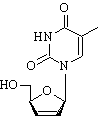We've been hearing a lot about counterfeit drugs this month, from thought-provoking sessions at the American Association of Pharmaceutical Scientists' annual meeting to headline-grabbing Food and Drug Administration press conferences. The range of deception is wide, from "premature generics" that contain actual active ingredients in correct dosages to gonadotropin masquerading as human growth factor to lethal ersatz vaccines made with antifreeze.
Yet it's still hard to be sure exactly what to think. Call it Tevye's Syndrome: On the one hand, it's not clear that counterfeiting in the United States actually constitutes the public health menace one would expect from all the vociferating. On the other hand, the human cost of those cases that do occur is so appalling that one feels that we must wipe out the problem at almost any cost.
On the one hand, the FDA handled 22 counterfeiting cases in 2003; 22 in 2002; and 20 in 2001. The consistency of these figures, compared with the equally consistent average of 5.5 cases per year in the preceding years, makes the increase in activity look like a change in enforcement emphasis rather than a change in underlying activity. Opponents of reimportation use the threat of counterfeit drugs as a stalking horse, playing off the country's rising xenophobia to hide complex economic and policy issues behind the simpler threat of poison smuggled in by foreign profiteers.
But on the other hand ...
On the other hand, if we don't keep up the pressure on counterfeiting in the United States, we may share the plight of the developing world, where about three quarters of fake drugs are sold, according to the World Health Organization. During a single 1995 meningitis epidemic in Niger, 2500 people died after receiving counterfeit vaccine (received, WHO says, "as a gift from a country which thought they were safe"). Paracetamol cough syrup tainted with diethylene glycol killed 89 Haitians in 1995 and 30 Indian infants in 1998. And in Africa, where malaria kills a million people a year, fakes account for more than half of the antimalarials on the market. WHO estimates that 200,000 people might survive annually if they could receive effective medication.
The known problems in the United States are much smaller, and we tend to trivialize them by connecting the problem mostly with lifestyle drugs--bootleg Viagra peddled to the credulous over the Internet. In fact, counterfeiters in the United States prey upon the most vulnerable, just as they do in the developing countries, with counterfeit statins, under-strength blood growth factors, and mislabeled antiretrovirals.
Last February, the National Association of Boards of Pharmacy issued a "National Specified List of Susceptible Drug Products." Of the 30 drugs on that list *, 23 treat AIDS or cancer, according to a WebMD analysis. So the counterfeiters--lone-wolf grifters and organized crime--target the isolated, the poor, and the desperate.
FDA has just announced that it will open up labeling rules to allow drug-makers to experiment with radio frequency identification (RFID) tags on bulk packaging (see page 17). This is just a part of the much wider attack on counterfeiting that FDA outlined, also last February, in its report Combating Counterfeit Drugs, with a comprehensive timeline of measures for keeping fakes out of the supply chain--and out of consumers' systems.
The FDA's anticounterfeit plan makes it clear that success requires more than technology. It requires--and this will be second nature to drug manufacturers--vigilant attention to systems and procedures.
That comes at a cost, of course. But, despite nagging doubts about some of the sources of the current focus on pharmaco-fakery, that price may well be worth what it buys: a reduction in needless suffering.
* The current entries on NABP's "National Specified List of Susceptible Drug Products" are Combivir, Crixivan, Diflucan, Epivir, Epogen, Gamimune, Gammagard, Immune globulin, Lamisil, Lipitor, Lupron, Neupogen, Nutropin AQ, Panglobulin, Procrit, Retrovir, Risperdal, Rocephin, Serostim, Sustiva, Trizivir, Venoglobulin, Videx, Viracept, Viramune, Zerit, Ziagen, Zocor, Zofran, Zoladex, Zyprexa.
Douglas McCormick is editor in chief of Pharmaceutical Technology. dmccormick@advanstar.com
COPYRIGHT 2004 Advanstar Communications, Inc.
COPYRIGHT 2005 Gale Group



